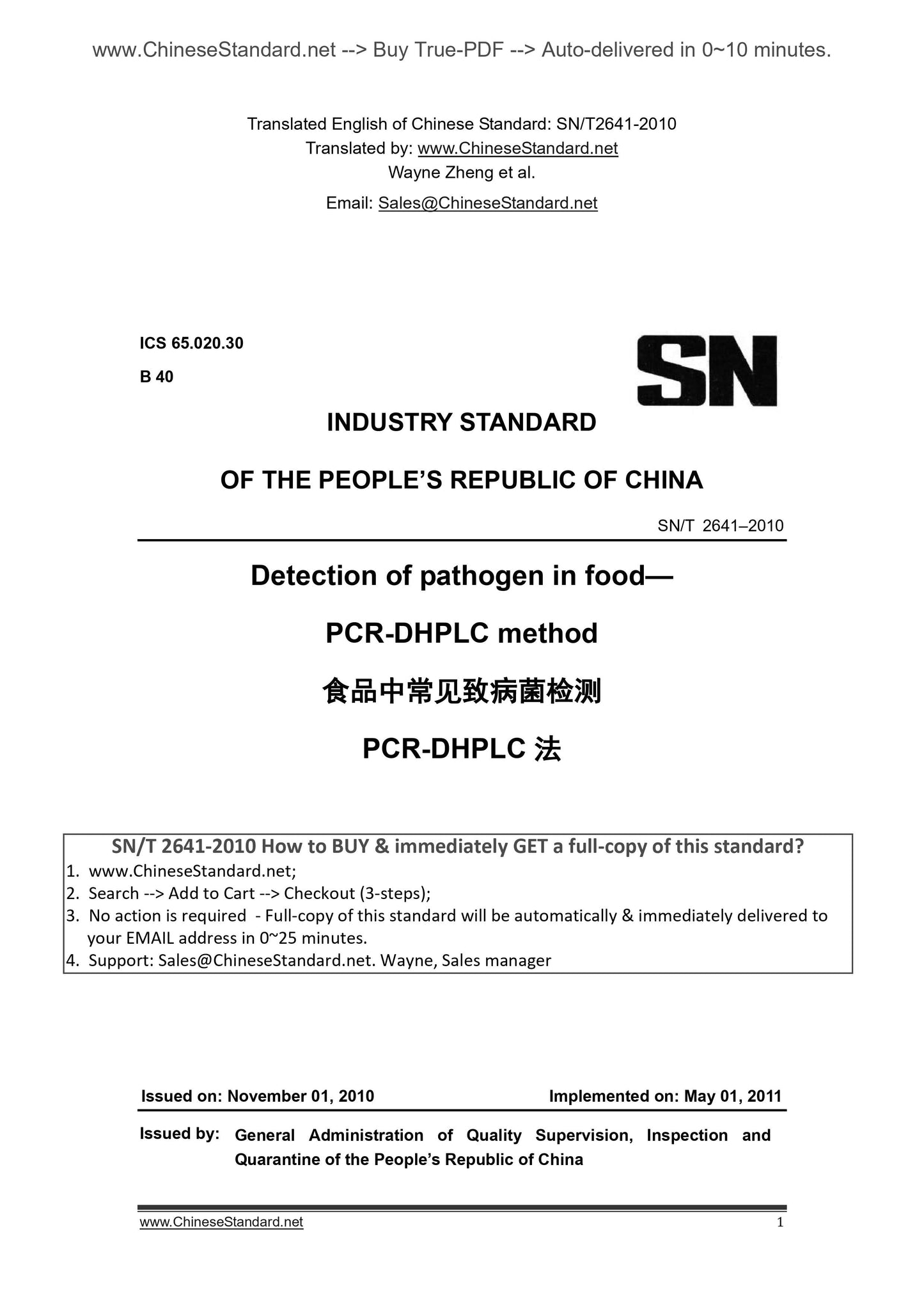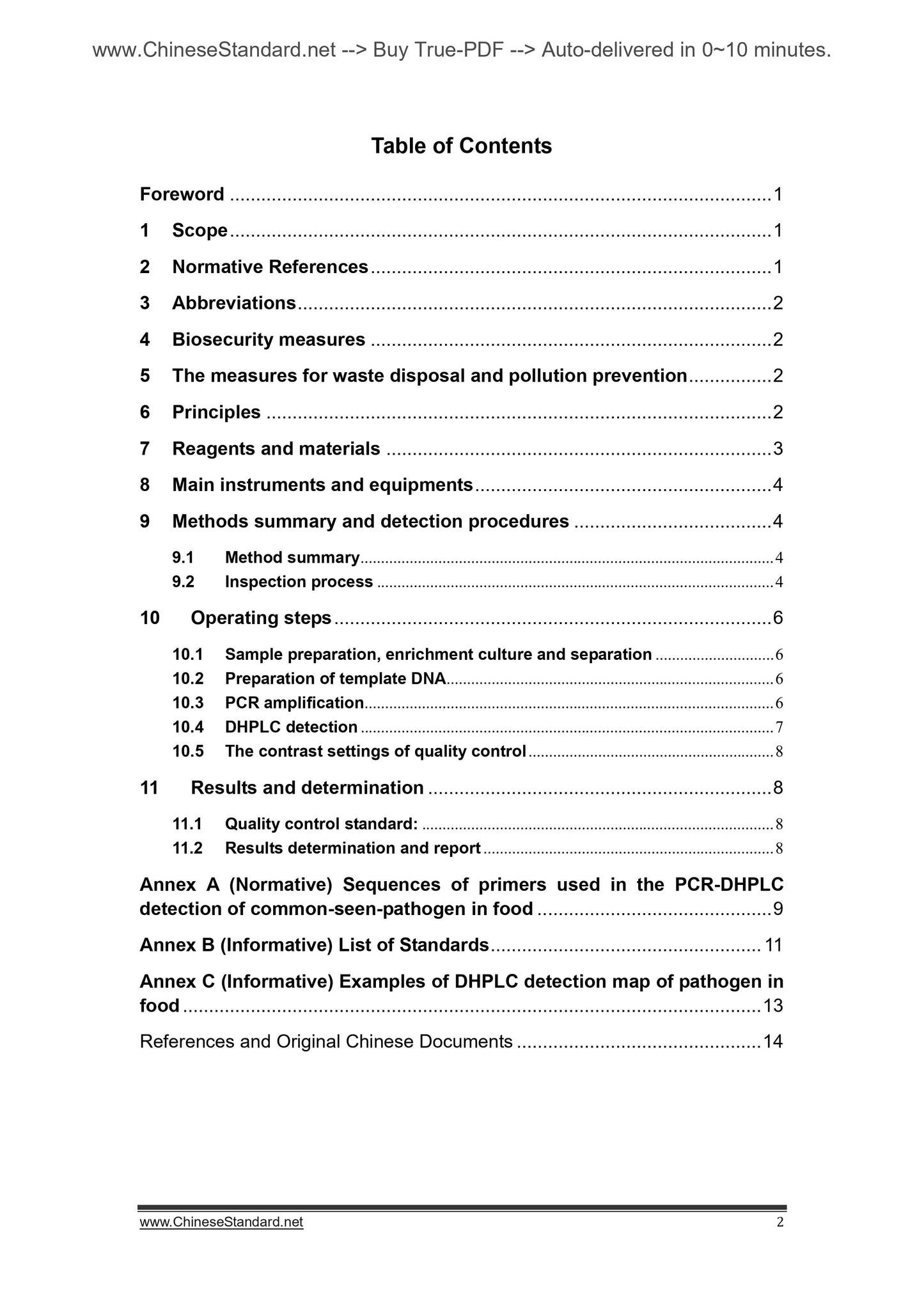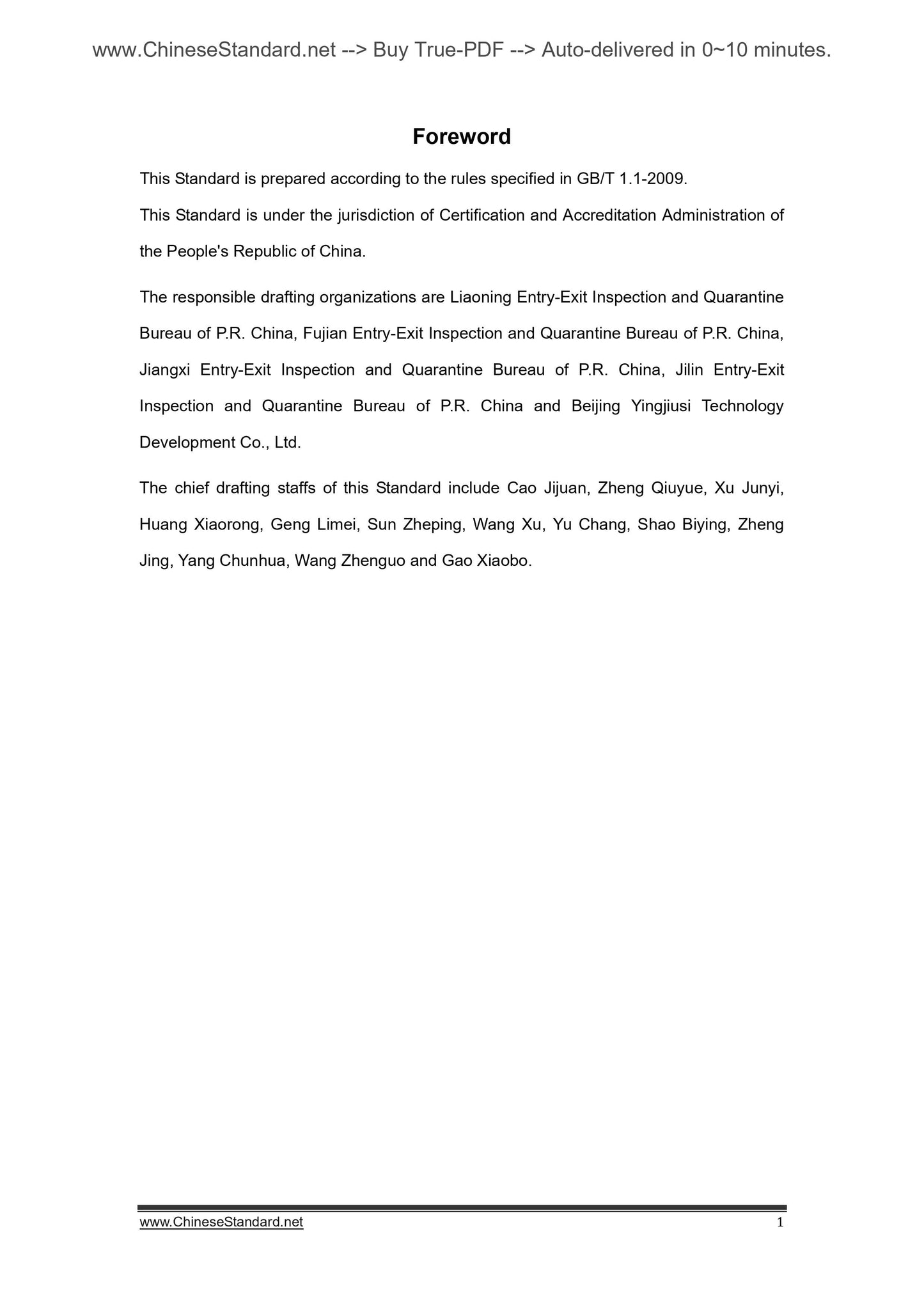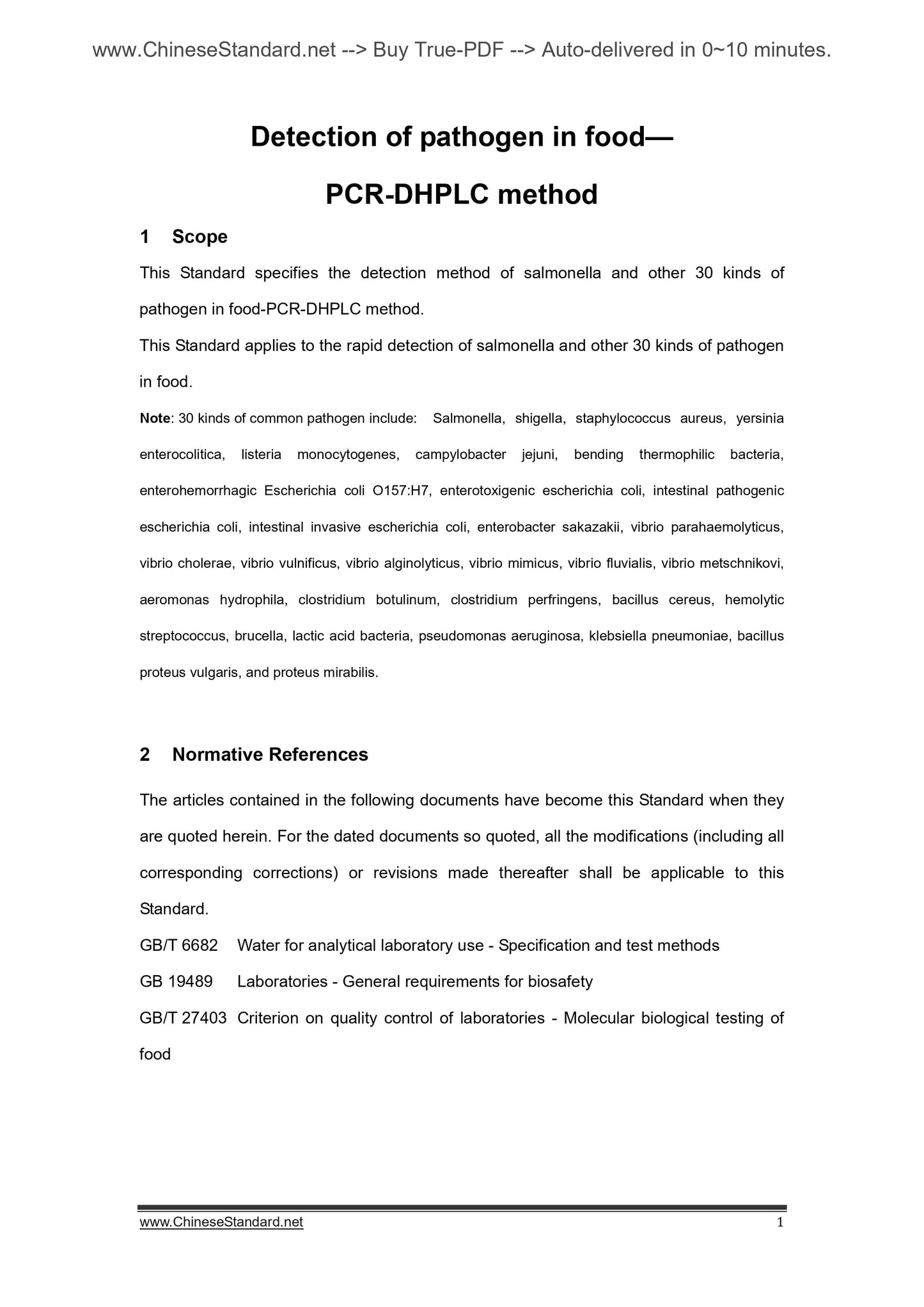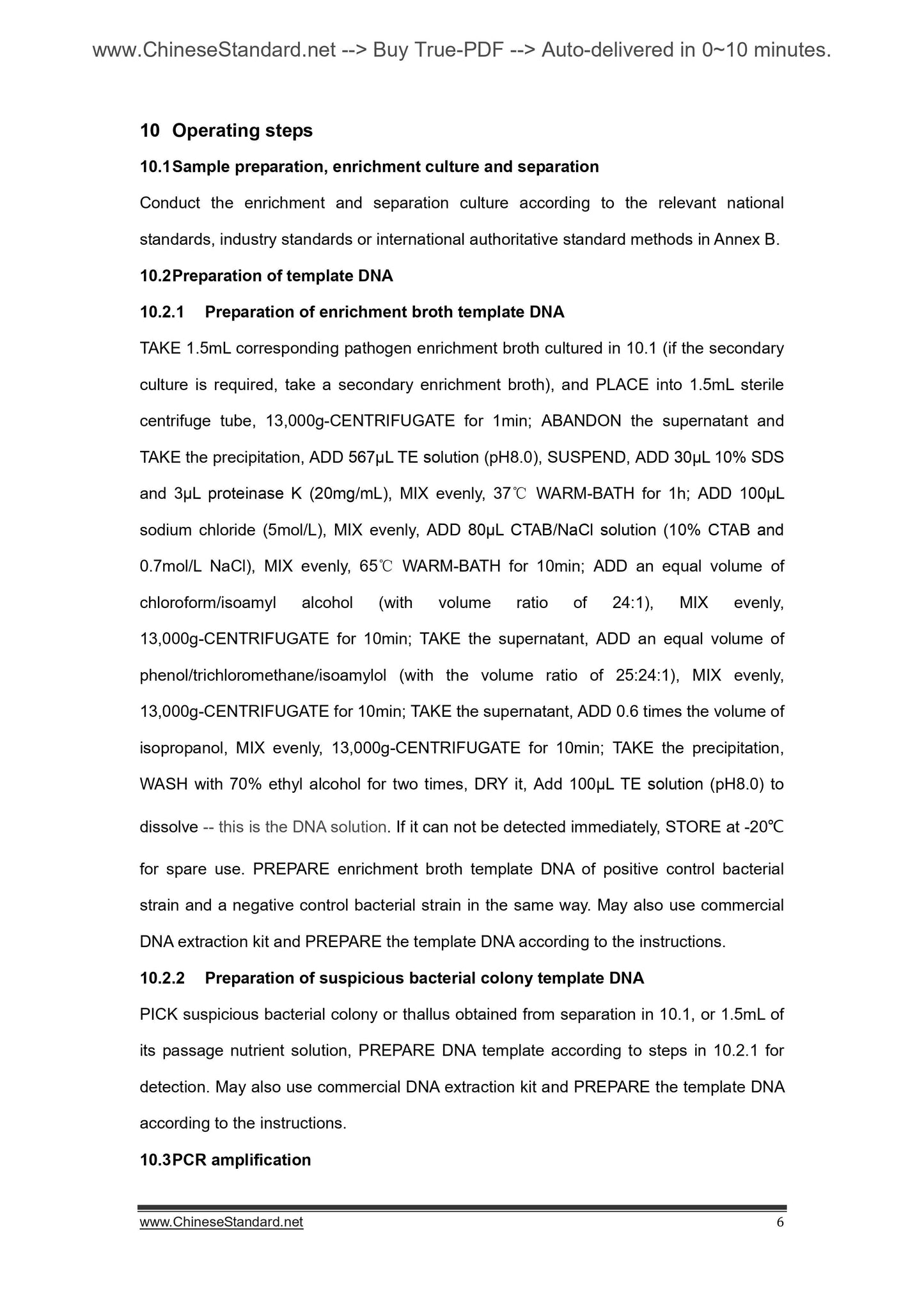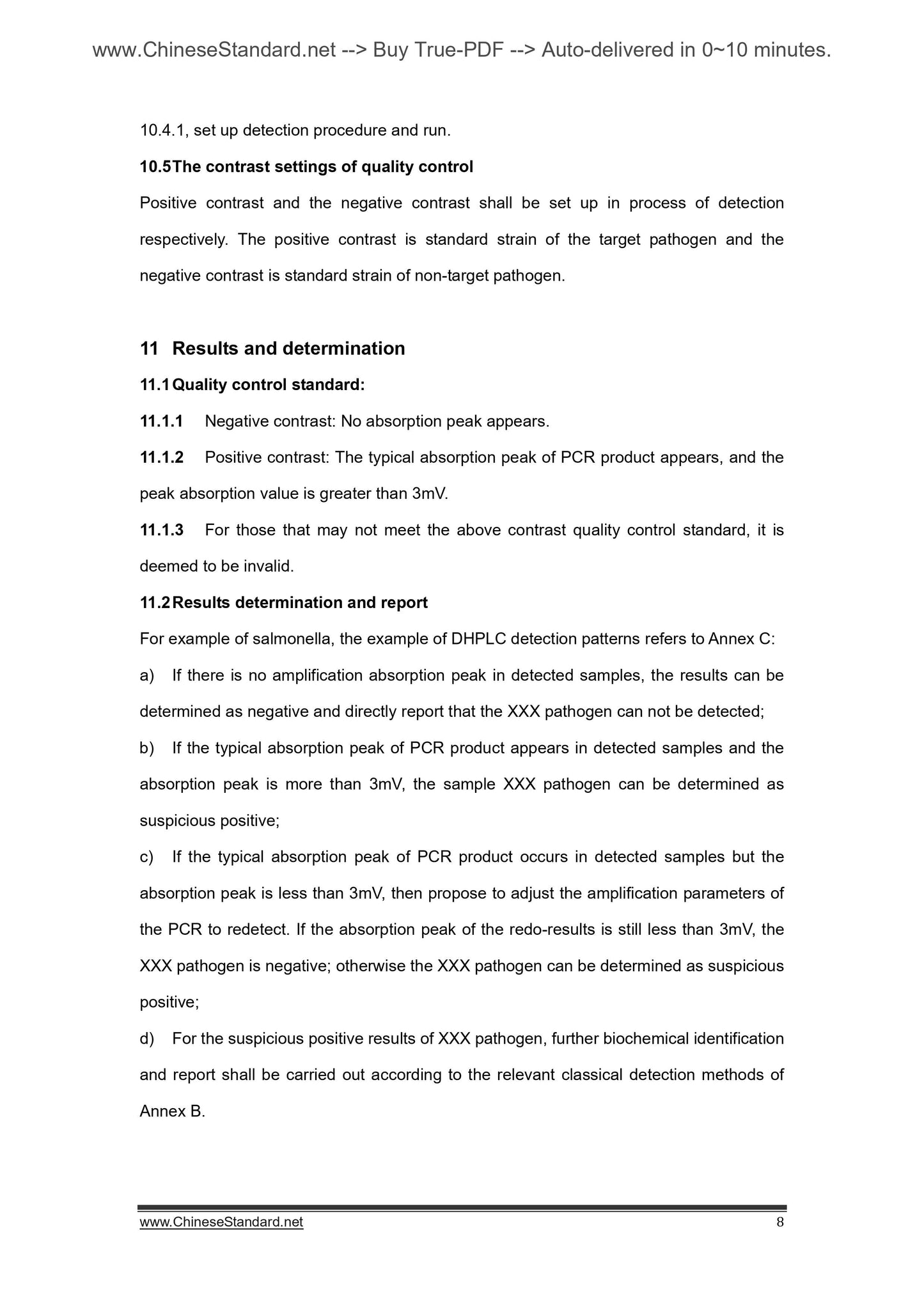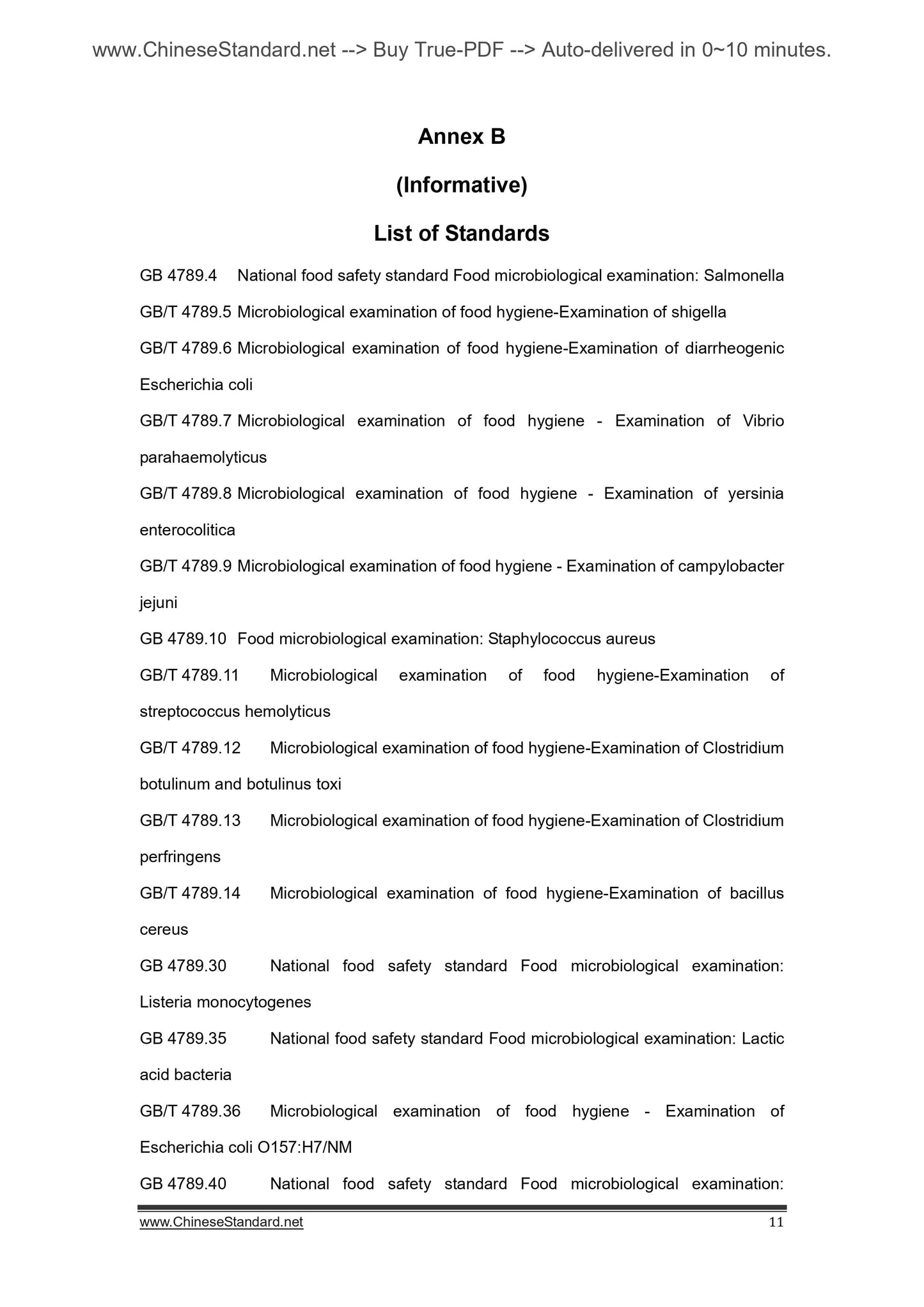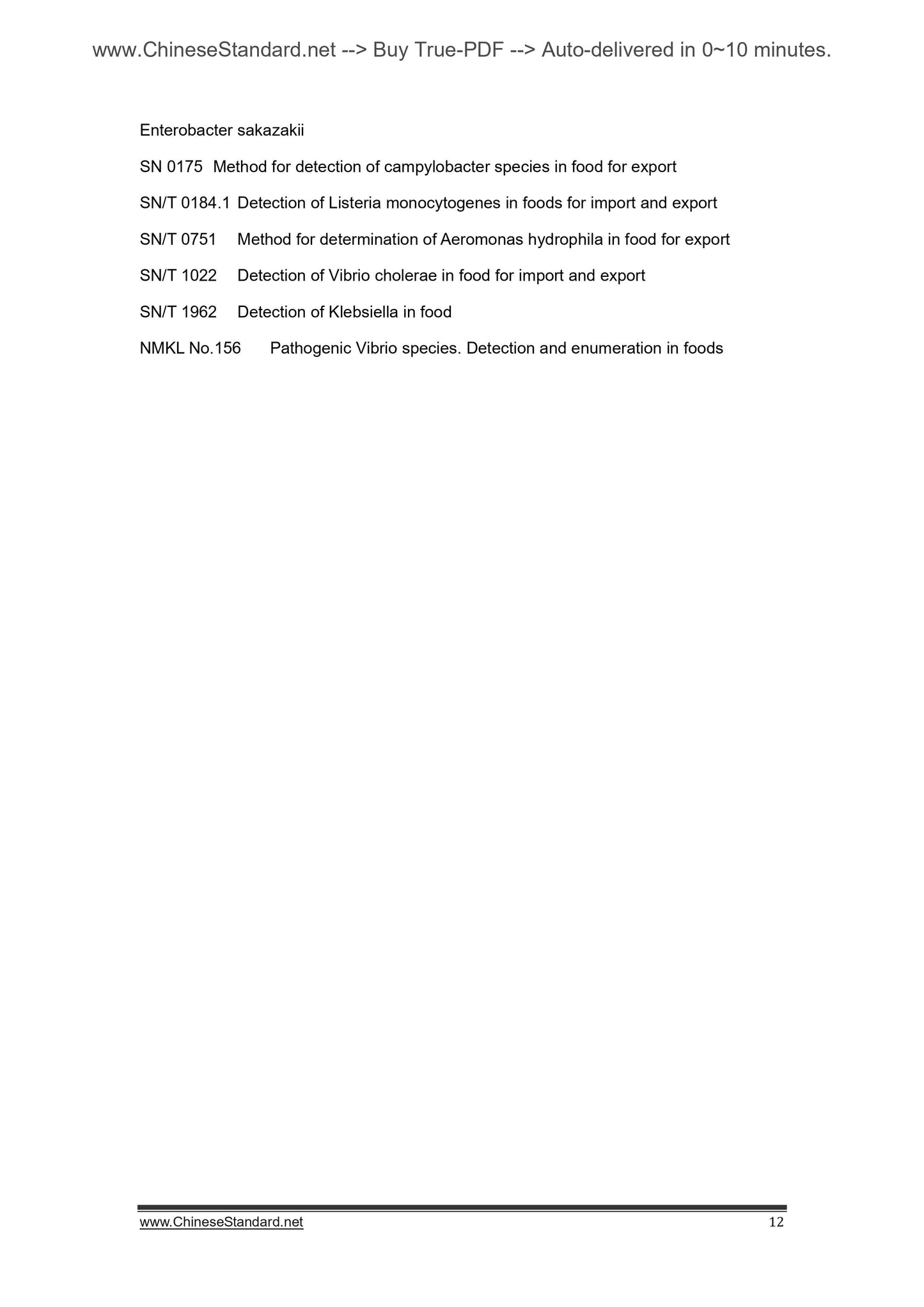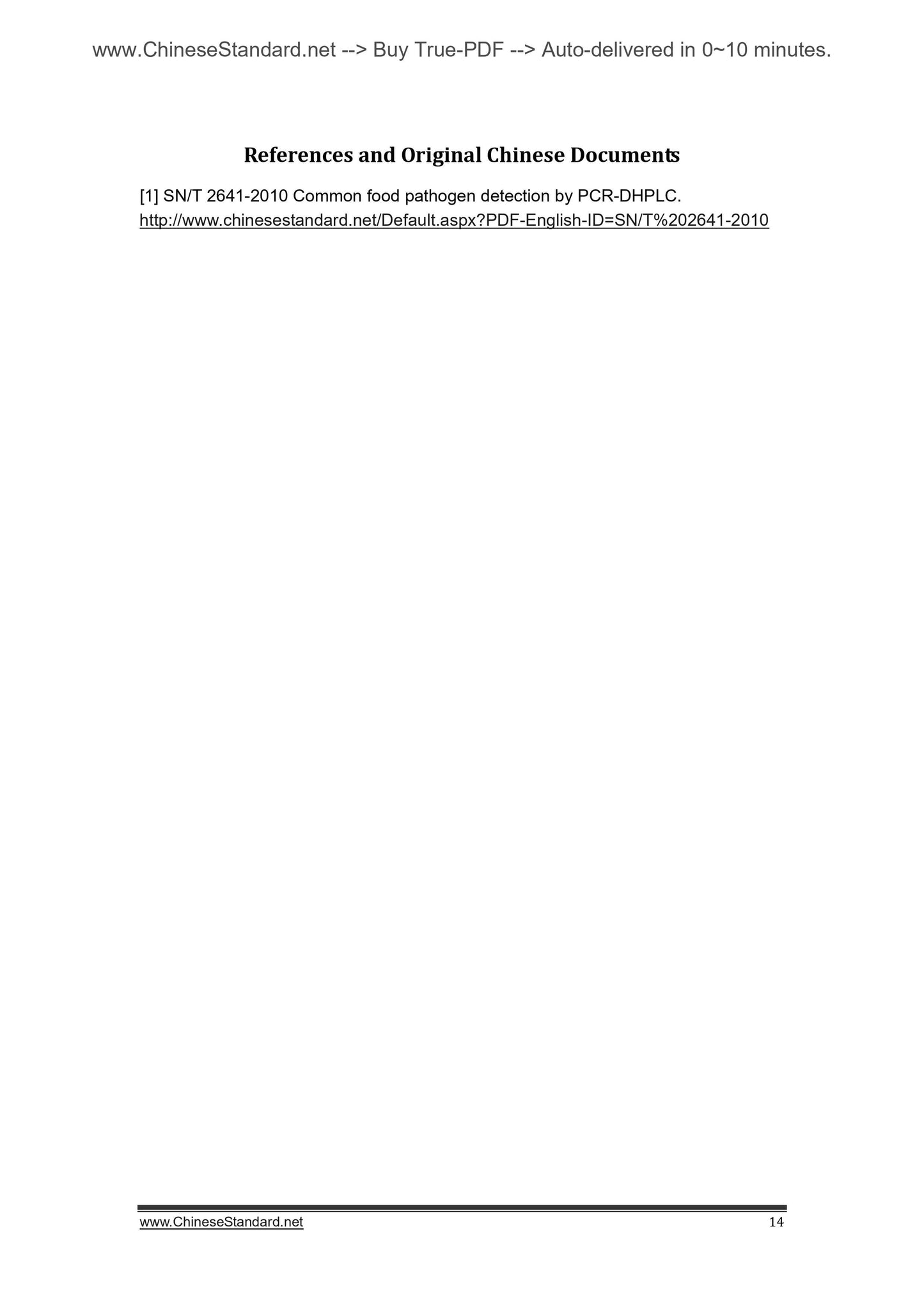1
/
of
9
www.ChineseStandard.us -- Field Test Asia Pte. Ltd.
SN/T 2641-2010 English PDF (SN/T2641-2010)
SN/T 2641-2010 English PDF (SN/T2641-2010)
Regular price
$145.00
Regular price
Sale price
$145.00
Unit price
/
per
Shipping calculated at checkout.
Couldn't load pickup availability
SN/T 2641-2010: Detection of pathogen in food - PCR-DHPLC method
Delivery: 9 seconds. Download (and Email) true-PDF + Invoice.Get Quotation: Click SN/T 2641-2010 (Self-service in 1-minute)
Newer / historical versions: SN/T 2641-2010
Preview True-PDF
Scope
This Standard specifies the detection method of salmonella and other 30 kinds ofpathogen in food-PCR-DHPLC method.
This Standard applies to the rapid detection of salmonella and other 30 kinds of pathogen
in food.
Note. 30 kinds of common pathogen include. Salmonella, shigella, staphylococcus aureus, yersinia
enterocolitica, listeria monocytogenes, campylobacter jejuni, bending thermophilic bacteria,
enterohemorrhagic Escherichia coli O157.H7, enterotoxigenic escherichia coli, intestinal pathogenic
escherichia coli, intestinal invasive escherichia coli, enterobacter sakazakii, vibrio parahaemolyticus,
vibrio cholerae, vibrio vulnificus, vibrio alginolyticus, vibrio mimicus, vibrio fluvialis, vibrio metschnikovi,
aeromonas hydrophila, clostridium botulinum, clostridium perfringens, bacillus cereus, hemolytic
streptococcus, brucella, lactic acid bacteria, pseudomonas aeruginosa, klebsiella pneumoniae, bacillus
proteus vulgaris, and proteus mirabilis.
Basic Data
| Standard ID | SN/T 2641-2010 (SN/T2641-2010) |
| Description (Translated English) | Detection of pathogen in food - PCR-DHPLC method |
| Sector / Industry | Commodity Inspection Standard (Recommended) |
| Classification of Chinese Standard | X04 |
| Classification of International Standard | 07.100.30 |
| Word Count Estimation | 13,116 |
| Date of Issue | 2010-11-01 |
| Date of Implementation | 2011-05-01 |
| Quoted Standard | GB/T 6682; GB 19489; GB/T 27403 |
| Regulation (derived from) | National Quality Inspection (2010) 582 |
| Issuing agency(ies) | General Administration of Customs |
| Summary | This standard specifies the salmonella and other 30 kinds of food pathogens PCR DHPLC detection method. This standard applies to salmonella and other 30 kinds of food for rapid detection of pathogens. Note: The 30 kinds of common pathogens include: Salmonella, Shigella, Staphylococcus aureus, Yersinia enterocolitica, Listeria monocytogenes bacteria, Campylobacter jejuni, addicted bending aspergillosis, intestinal bleeding Escherichia O157 |
Share
